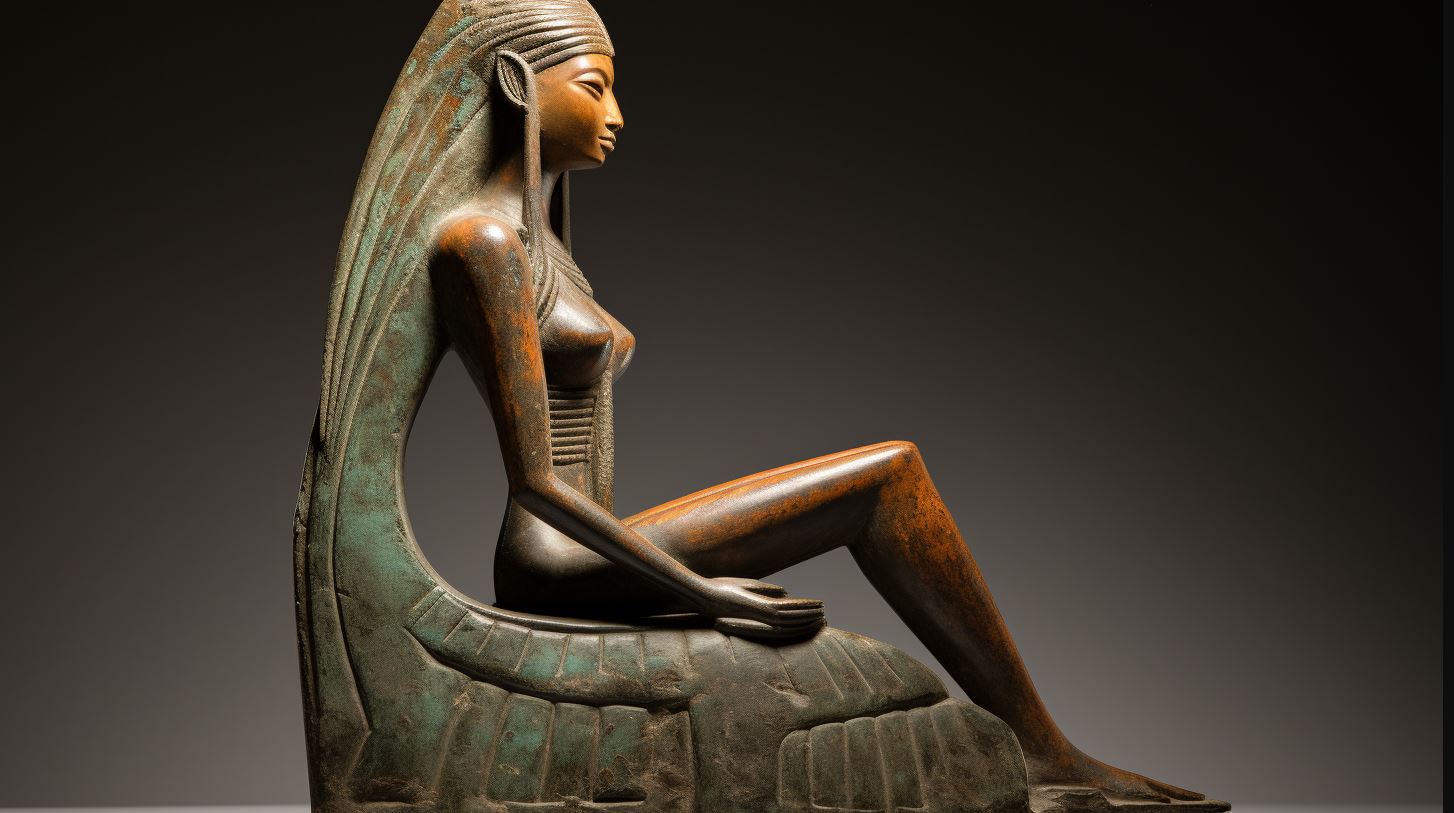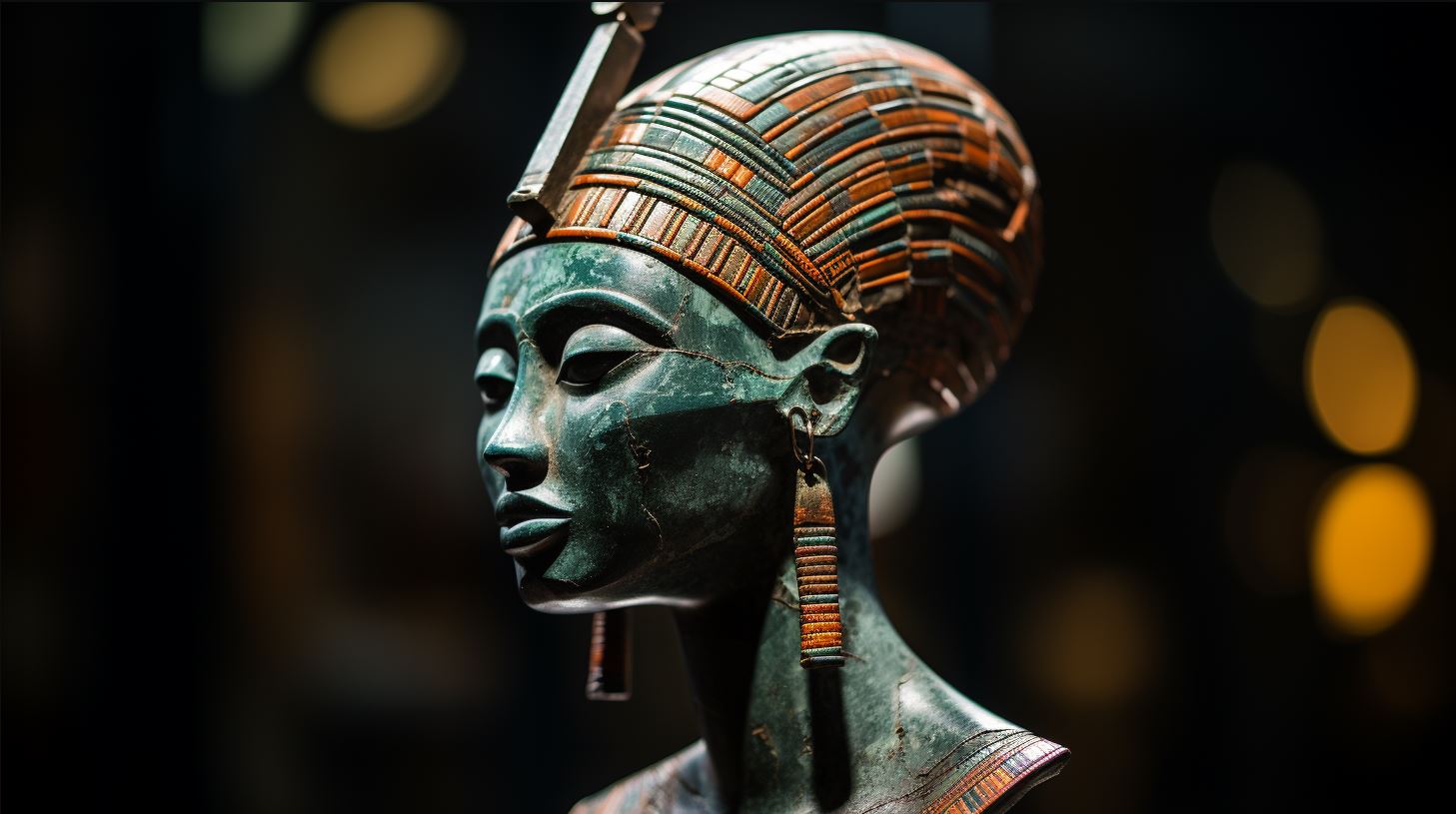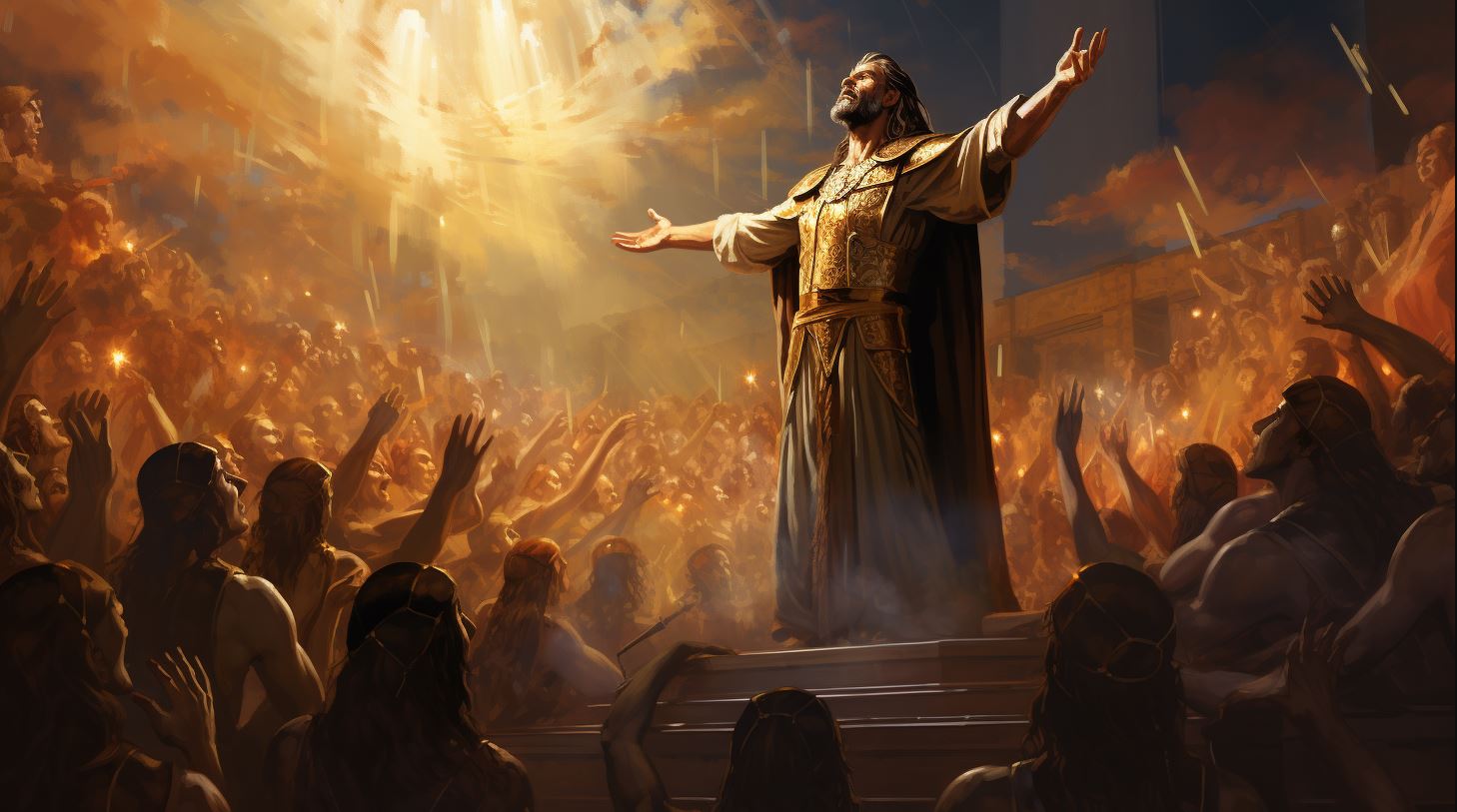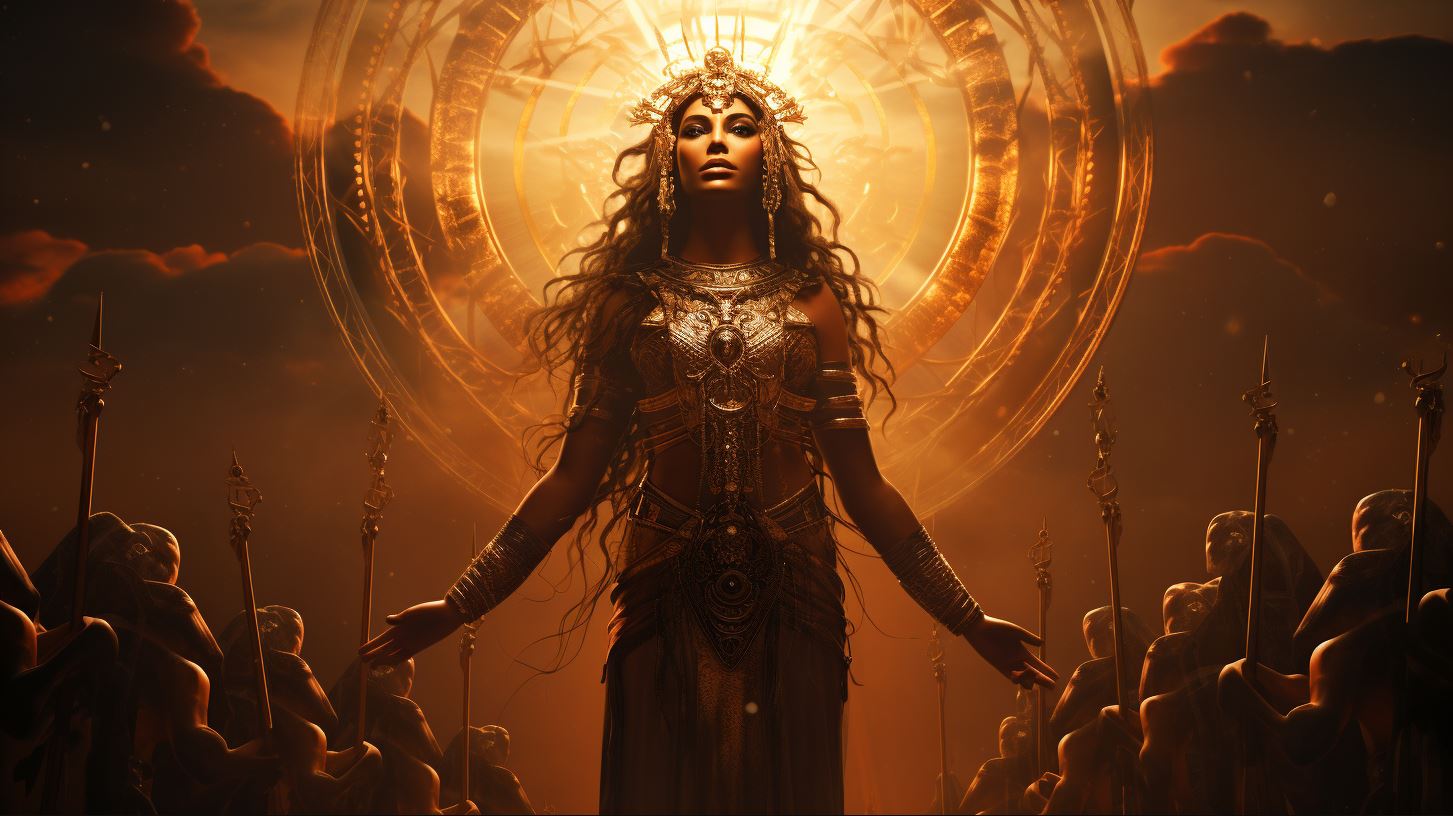Ashima Goddess: Unveiling the Secrets and Significance of this Semitic Deity

Ashima Goddess, a prominent figure in Semitic mythology, captivates with her enigmatic presence. Depicted through various interpretations, her true origin and attributes continue to intrigue scholars. The worship of Ashima left a lasting impact on Semitic religious beliefs, spawning rituals and practices that shaped ancient societies.
References to Ashima in Hebrew scriptures hint at her influence on Hebrew monotheism. Today, modern interpretations and theories shed light on her cultural significance and relevance in contemporary religions. Join us as we delve into the rich legacy of Ashima Goddess.
Ashima Goddess in Semitic Mythology
Welcome to the captivating world of Ashima Goddess in Semitic mythology. In this section, we will delve into her intriguing origins and depict the various representations attributed to her. Let’s explore her role and attributes as depicted in Ugaritic texts and examine how she compares to other prominent Semitic goddesses.
Origins and Depictions
Ashima’s origins remain shrouded in mystery. While the exact details are elusive, she has left her mark on ancient Semitic cultures. Artists and writers throughout history have depicted her in various forms, attempting to capture her essence.
From ancient Babylonian carvings to Ugaritic artifacts, Ashima’s depictions reflect her divine nature and the reverence she commanded.
Role and Attributes in Ugaritic Texts
In Ugaritic texts, Ashima is often portrayed as a goddess of fertility, associated with abundance, growth, and the cycles of nature. She is revered for her power to bring forth life and ensure bountiful harvests.
Ashima’s role in Ugaritic mythology highlights her importance as a source of sustenance and a protector of life’s vitality.
Comparison with Other Semitic Goddesses
When examining Ashima within the context of Semitic mythology, it becomes apparent that she shares similarities and influences with other goddesses in the region. Her attributes and associations overlap with deities such as Astarte, Ishtar, and Atargatis, suggesting a shared cultural heritage and interconnectedness among Semitic pantheons.
By comparing Ashima to her counterparts, we can gain a deeper understanding of her significance in the larger religious framework of ancient Semitic societies.
As we journey through the realm of Ashima Goddess in Semitic mythology, we uncover a complex deity whose origins, depictions, and role speak to her importance in various ancient cultures.
Join us as we unravel the mysteries surrounding this captivating goddess.
The Worship of Ashima Goddess
Within the realm of Ashima worship, various rituals and practices played a crucial role in expressing devotion to this enigmatic deity. These rites often included ceremonies centered around the offering of sacrifices, both animal and symbolic, to appease and seek favor from Ashima.
Additionally, the recitation of prayers and hymns dedicated to her invoked her presence and protection. Pilgrimages to sacred sites, where gatherings and ceremonies took place, formed an integral part of the worship experience.
Worship Sites and Temples
The worship of Ashima encompassed an array of worship sites and temples throughout the regions where her influence thrived. These sacred locations served as focal points for her devotees, providing spaces for communal worship and spiritual communion.
Magnificent temples dedicated to Ashima stood as architectural marvels, adorned with intricate carvings and artworks depicting her divine presence. These sacred spaces resonated with intense spiritual energy, fostering a deep connection between the worshipers and their revered goddess.
Impact on Semitic Religious Beliefs
The worship of Ashima left an indelible mark on Semitic religious beliefs, influencing the perception and understanding of divinity within these ancient societies. It played a prominent role in shaping the religious landscape by intertwining elements of nature worship, fertility, and divine guidance.
The adoration of Ashima often coexisted with the worship of other Semitic deities, contributing to the syncretism that characterized the region’s religious practices. The impact of Ashima’s worship extended beyond rituals and traditions, shaping the moral and ethical frameworks of the communities that revered her.
Delve into the profound worship practices that surrounded Ashima Goddess and unravel the intricate connections between her adoration and the beliefs held by Semitic societies of the past.
Ashima Goddess in Hebrew Scriptures
In the Hebrew Scriptures, references to Ashima Goddess provide us with intriguing insights into her significance in ancient Semitic cultures.
Let’s explore these references, the implications they hold for Hebrew monotheism, and their influence on Canaanite myths and legends.
References in the Bible
While the exact details of Ashima’s form of worship are not known, various theories have been proposed by different references and writers.
Implications for Hebrew Monotheism
This straying from monotheism had profound consequences for the spiritual and moral fabric of ancient Israel.
Influence on Canaanite Myths and Legends
Ashima’s presence in Hebrew Scriptures also suggests a connection to Canaanite mythology. Some scholars have drawn parallels between Ashima and the deity Ashmath mentioned in Deuteronomy 14:5, referring to a kind of male goat.
Additionally, comparisons have been made between Ashima and the Phoenician god Esmun, who corresponds to the Greek god of healing, Asclepius. The association of Ashima with the Egyptian worship of Pan and the appearance of goats in Babylonian reliefs further contribute to the intricate web of mythology surrounding her.
Overall, the references to Ashima Goddess in Hebrew Scriptures shed light on the challenges faced by Hebrew monotheism and its interactions with neighboring polytheistic beliefs. By exploring these references, we can deepen our understanding of the historical and cultural factors that shaped religious practices and beliefs in ancient Semitic societies.
Recap of Key Findings:
- Ashima was worshipped by the men of Hamath in Samaria, as mentioned in 2 Kings 17:30.
- References to Ashima highlight the deviation from the true worship of the one God in Hebrew monotheism.
- Ashima’s worship in Israel had profound implications for the spiritual and moral integrity of ancient Hebrew society.
- Ashima’s influence in Hebrew Scriptures suggests connections to Canaanite mythology and other Semitic deities.
Reflections on the Legacy of Ashima Goddess:
The presence of Ashima in Semitic mythology and Hebrew Scriptures serves as a reminder of the complexities of religious beliefs in ancient times.
Through further study and interpretation, we can continue to unravel the mysteries surrounding Ashima and gain a deeper understanding of the cultural and spiritual landscapes of the past.
Ashima Goddess: Modern Interpretations and Relevance
Ashima Goddess continues to captivate scholars, triggering a myriad of modern interpretations and explorations into her significance across different religious traditions.
In this section, we delve into the perspectives and theories put forth by scholars, examine the connections between Ashima and contemporary religions, and explore the ongoing cultural significance and relevance of this ancient deity.
Scholars’ Perspectives and Theories
When it comes to understanding Ashima Goddess, scholars offer diverse interpretations and theories based on their investigations and analysis. Some propose connections between Ashima and other Semitic deities, tracing similarities in their attributes and roles.
Others explore the cultural and historical context in which she was revered and shed light on local beliefs and practices. Additionally, various theories speculate on her origins and possible influences from neighboring civilizations.
One prevailing theory suggests that Ashima’s worship might have influenced later religious traditions, particularly within the Canaanite and Hebrew cultures. Scholars continue to debate the implications of Ashima’s presence in ancient texts, further fueling the exploration of her place in the religious landscape of the time.
Connections to Contemporary Religions
Despite belonging to the realm of ancient mythology, Ashima Goddess’s influence can still be discerned in certain modern religious practices. Some scholars draw parallels between Ashima’s attributes and roles and those of present-day goddesses, considering her a precursor to the divine feminine in various religious systems.
Furthermore, Ashima’s worship has left subtle imprints on rituals, symbols, and spiritual concepts found in specific religious traditions. These echoes illustrate the lasting impact of ancient deities like Ashima on the development and evolution of religious practices throughout history.
Cultural Significance and Relevance Today
While Ashima Goddess may not enjoy the widespread recognition accorded to certain major deities, her cultural significance endures in several ways. Artists, writers, and scholars continue to explore and reinterpret her mythological tales, keeping her legacy alive in contemporary storytelling and artistic expressions.
Moreover, Ashima serves as a reminder of the rich cultural heritage and religious diversity that has shaped human history. By studying her worship and impact, we gain valuable insights into the beliefs, values, and societal structures of ancient civilizations.
Today, Ashima Goddess remains an enigma, inspiring ongoing research and contributing to our understanding of the complex tapestry of human spirituality and belief systems.
Origins and Depictions
The origins of Ashima Goddess remain shrouded in mystery, but scholars have unearthed fascinating insights into her depictions in Semitic mythology. She is often portrayed as a powerful and enigmatic figure, with her form varying across different texts and artistic representations.
The diverse depictions of Ashima highlight the complexity and significance of her role in ancient beliefs.
Role and Attributes in Ugaritic Texts
In Ugaritic texts, Ashima is associated with fertility, abundance, and the cycles of nature. She is revered as a divine mother figure and protector, embodying the forces of creation and sustenance.
Her connection to the natural world emphasizes the importance of agricultural prosperity and the interconnectedness of human life with the cycles of the earth.
Comparison with Other Semitic Goddesses
Ashima shares similarities with other Semitic goddesses, such as Ishtar and Astarte. These goddesses also represent aspects of fertility, love, and power. The comparisons between Ashima and other Semitic deities shed light on the interplay and exchange of religious beliefs and practices in the ancient Near East.
Reflections on the Legacy of Ashima Goddess
Scholars’ Perspectives and Theories
Scholars have engaged in extensive debates and theories regarding the significance and legacy of Ashima Goddess. Some see her as a symbol of female empowerment and the celebration of the divine feminine in early cultures.
Others view her worship as a reflection of ancient agricultural societies’ close relationship with nature and the divine forces governing fertility.
Connections to Contemporary Religions
Although Ashima Goddess is primarily associated with ancient Semitic beliefs, echoes of her influence can be found in contemporary religions. The reverence for female deities and the recognition of their role in the natural cycles of life can be seen in modern spiritual and ecological movements.
Ashima’s legacy resonates with those seeking a deeper understanding of our place in the world.
Cultural Significance and Relevance Today
The legacy of Ashima Goddess extends beyond her historical context. She serves as a reminder of the diverse and multifaceted nature of human spirituality. Exploring her story encourages us to embrace the richness of different religious traditions and to recognize the intricate connections between culture, nature, and divine forces.
Ashima’s relevance today lies in her ability to inspire curiosity and contemplation about the spiritual dimensions of our existence.
Reflecting on the key findings surrounding Ashima Goddess reveals the depth and complexity of her role in ancient Semitic mythology.
Her depictions, influence on religious beliefs, and connections to contemporary spirituality all contribute to a more holistic understanding of the divine feminine and our place in the cosmic tapestry of existence.
…




















